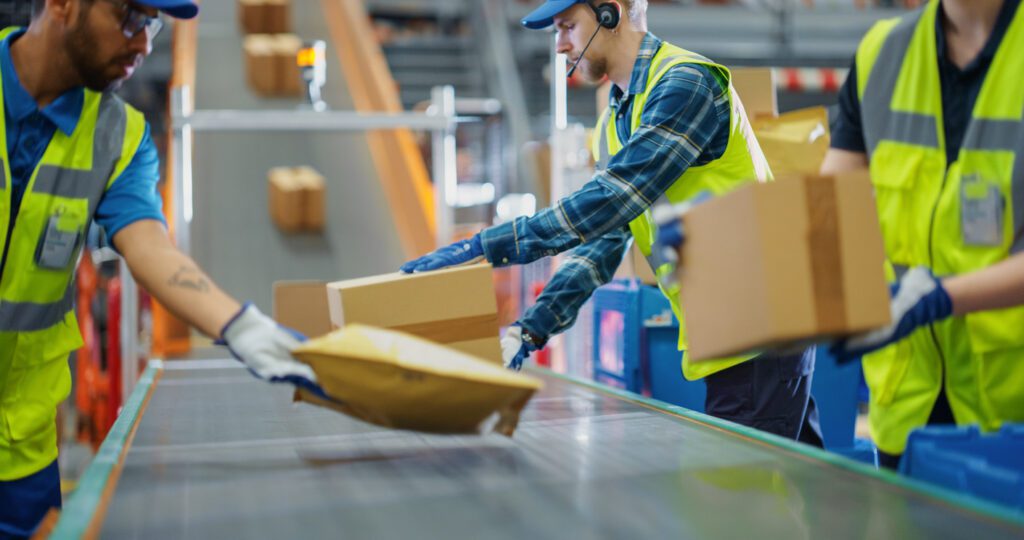Whether you’re managing a construction project or a corporate office, workplace injuries pose serious financial and human costs. More than 2 million cases of workplace injuries and illnesses occur every year. Smart wearable technology is helping forward-thinking businesses identify and eliminate risks before anyone gets hurt.
Tom West, Vice President and Global Practice Leader at MākuSafe and co-author of Safety and Wearable Technology, has spent nearly a decade transforming workplace safety through data-driven approaches. His company has helped organizations across many industries achieve their best workers compensation performance in years through proactive risk management.
Why traditional safety programs fall short
Aren’t standard safety programs enough? Not anymore. Today’s workplace demands more than reactive, “wait and see” approaches that leave businesses vulnerable to costly incidents.
The hidden costs of reactive safety management
Traditional safety management creates dangerous blind spots. Most programs rely on after-the-fact reporting and hope that documenting incidents will prevent future ones. The reality? Most near-misses are never reported, leaving safety managers with incomplete information about workplace risks.
“Often, safety management is still taught to perform several functions: hazard identification, risk assessment, and then implementation of the hierarchy of controls,” West said. “I think we need to look at safety as more of a continuous improvement process.”
The financial impact of a reactive safety program extends far beyond work comp premiums. Hidden costs include:
- Productivity losses
- Training replacement employees
- OSHA fines
- Impact on employee morale when colleagues get injured
What modern technology can accomplish
Proactive safety technology can improve a business’s understanding of and responsiveness to workplace risks. Instead of reacting to incidents, organizations can identify and eliminate hazards before they cause harm.
Organizations implementing enterprise-wide wearable safety programs see dramatic results. West shared that companies have achieved “conservatively, a 50-90% reduction in incident frequency and severity,” and seen impressive ROI in the first 12 months.
➡️ Here’s an example: West shared that a large general contractor building data centers throughout the Midwest created a communication system where workers could report safety concerns in real time. He visited their lunch tent and saw a rolling corkboard divided into “what you told us about” and “what we’re doing about it.” This is an excellent example of how data-driven approaches create meaningful dialogue about safety.

How workplace safety wearables work
What exactly are these devices monitoring? Let’s address the elephant in the room: privacy. One concern employees have about wearable technology is whether it’s tracking personal information.
Environmental monitoring without personal surveillance
Modern safety wearables focus on environmental conditions and work processes rather than tracking individual employees. They monitor real-time factors, including:
- Heat and humidity levels that can cause heat-related illnesses
- Noise exposure that could damage hearing over time
- Air quality, including chemical vapors and particulates
- Lighting conditions that affect visibility and safety
- Movement patterns that indicate ergonomic risks
- Proximity detection for equipment like forklifts
The technology deliberately avoids personal tracking. “There are no sensors looking at the individual,” West emphasized. “We’re not tracking people, nothing biometric, no PII (personally identifiable information). Instead, we’re looking outward and gathering real-time data about the widest array of concerns and hazards.”
📍 Note: Many consumer fitness trackers (e.g., Fitbit) do collect personal data like heart rate, sleep patterns, and location tracking. The safety-focused wearables West recommends are designed to avoid these privacy concerns by monitoring workplace conditions rather than individual employees.
Turning invisible hazards into actionable insights
The real value comes from making invisible workplace hazards visible to safety managers. Real-time alerts help identify problems before they cause injuries.
“We’ve seen all kinds of things,” recalled West. “Pockets of air that just aren’t moving around a facility, even though we just installed big fans. Or compounds, adhesives that are giving off gases and VOCs, which nobody anticipated.”
Real results: documented safety improvements
The evidence from early adopters demonstrates both immediate safety benefits and long-term financial impact.
Success stories across industries
West shared several examples of how organizations can use data from wearables to improve safety and reduce work comp costs:
- Warehousing companies have reduced strains and overexertion injuries to zero, maintaining multi-year streaks.
- Organizations have scaled up wearable technology enterprise-wide in less than a year and achieved their best work comp performance in years.
- Companies use proximity data to better understand forklift and powered industrial vehicle interactions with pedestrians.
Beyond safety: productivity and operational benefits
Safety improvements create ripple effects throughout operations. The same environmental data that prevents injuries also identifies inefficiencies and process improvements.
Organizations often see 5-6% productivity increases, which West noted can translate to thousands of dollars in savings per site.
“Keeping people safe can directly create business value,” West said. “Safety, productivity, and operational efficiency are not just interrelated – I think they’re interdependent.”
📍 Read next: Safety solutions for isolated employees >

Overcoming employee resistance to workplace technology
What about employee concerns? Successfully implementing workplace technology requires addressing privacy fears and technology intimidation upfront.
Build trust with transparency
Resistance to wearables is natural. Employees may worry about workplace surveillance, data privacy, and unfamiliar technology.
Successful organizations focus their communication on the safety benefits rather than productivity monitoring. Adoption improves when employees understand that wearable tech helps identify harmful exposures before they cause health problems.
West recommends explaining exactly what the technology does, what it doesn’t do, and why it benefits employees themselves. Transparency builds trust more effectively than mandates.
Leadership’s role in successful adoption
Effective implementation depends heavily on organizational culture and leadership approach. West emphasized that wearable tech works best in organizations with strong safety leadership and employee trust.
“The best tool in the world, if it’s not utilized, doesn’t do anybody any good,” West observed. Organizations need leaders willing to share data with frontline employees and act on what they learn.
West recommends a 90-day pilot approach to prove value before enterprise adoption. This gives management and employees time to see concrete benefits and address concerns.
Daily implementation: simpler than you think
What does using safety wearables actually look like? As with most things, the most practical implementation advice is to keep it simple. Here’s what a typical day might look like for a company using this technology.
The employee experience
Employees check in at digital kiosks similar to time clocks, select a wearable device, and insert it into an armband. The technology then operates in the background without requiring interaction.
“Employees log in with some uniquely identifiable code like an employee ID, and they remove from the kiosk a wearable device that’s about the size of your thumb,” West explained. “They really don’t have to interact with the wearable device at all if they choose not to.”
Safety managers monitor conditions through smartphone apps, receiving real-time alerts about elevated risks. Data visualization shows hotspots and trends – no special training required.
Integration with existing programs
Wearable technology integrates with most environmental health and safety management software, allowing organizations to incorporate the data into existing workflows.
Integration doesn’t require completely rebuilding safety programs. Instead, the data improves hazard identification and objectively measures whether safety initiatives are working.
📍 Read next: Predictive safety tech for fatigue management >
Moving beyond behavior-based safety
Why do traditional behavior-focused programs fail? Often, they focus on the wrong problem.
Targeting work processes, not employees
When safety concerns arise, the issue isn’t usually employee behavior – it’s work design.
➡️ Here’s an example: In one scenario, data revealed that an employee’s elevated physical stress wasn’t due to poor choices, but simply because they were shorter than their colleagues and had to reach more and lift differently to perform the same tasks.
Objective data often reveals system-level problems that require engineering solutions rather than behavior modification. Instead of assuming employees need correction, organizations can redesign work processes to eliminate risks.
Understanding work as actually performed
There’s a concept in the study of human and organizational performance: “work as planned” vs. “work as performed.” Real work rarely follows perfect procedures, and understanding those variations helps identify where processes need improvement.
“Target the work, not the employee,” West emphasized. This philosophy shifts from blaming individuals to fixing systems, which helps you create lasting improvements that prevent injuries and impact your future premium calculations.
✅ The bottom line: Wearable technology makes risk reduction an ongoing process instead of an annual evaluation.

The future of workplace safety is data-driven
The results from early adopters are in, and it’s clear that wearable technology supports a shift from reactive response to proactive risk prevention.
Organizations that see the best results view safety and productivity as interdependent rather than competing priorities. When you can prevent injuries while improving operational efficiency, the business case becomes compelling for any size of organization.
“The evidence is there,” concluded West, “I think the future is now, and it’s time to evolve.”
Wearable technology offers a proven path to both immediate safety improvements and long-term cost reduction. It’s becoming more accessible, easier to implement, and more integrated with existing business systems.
Starting from scratch with your safety program? Start with the basics: Foundations of a Workplace Safety Program >